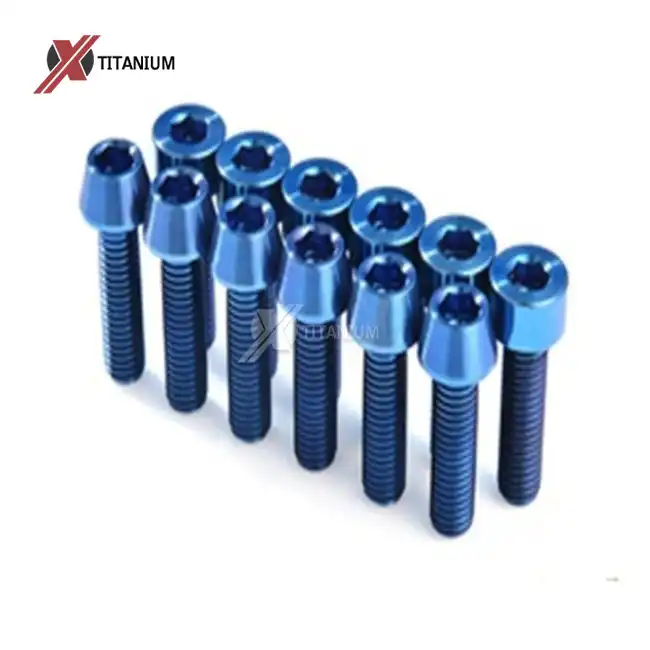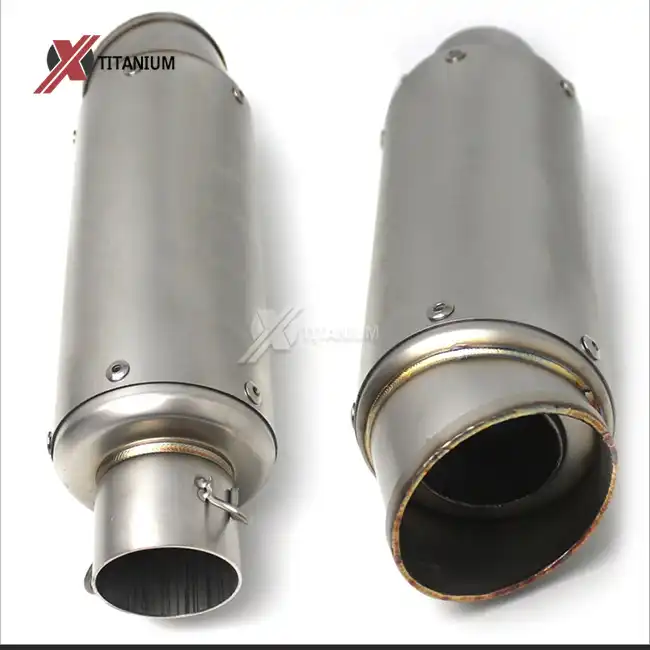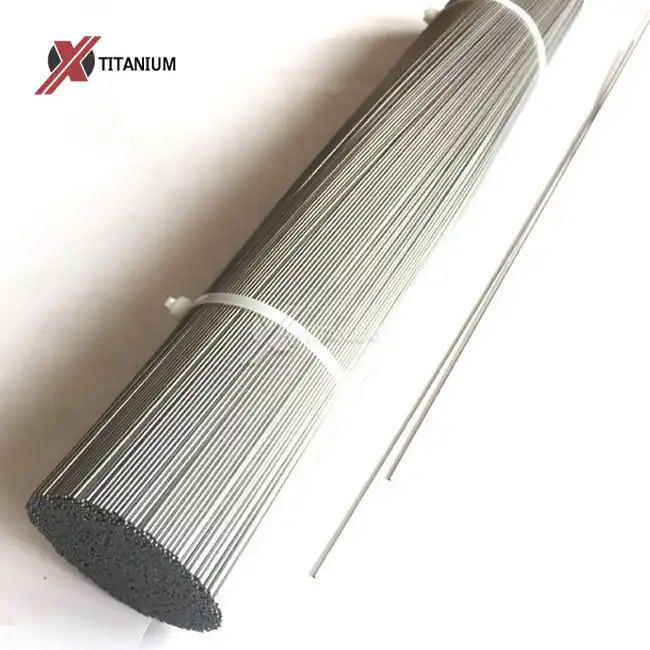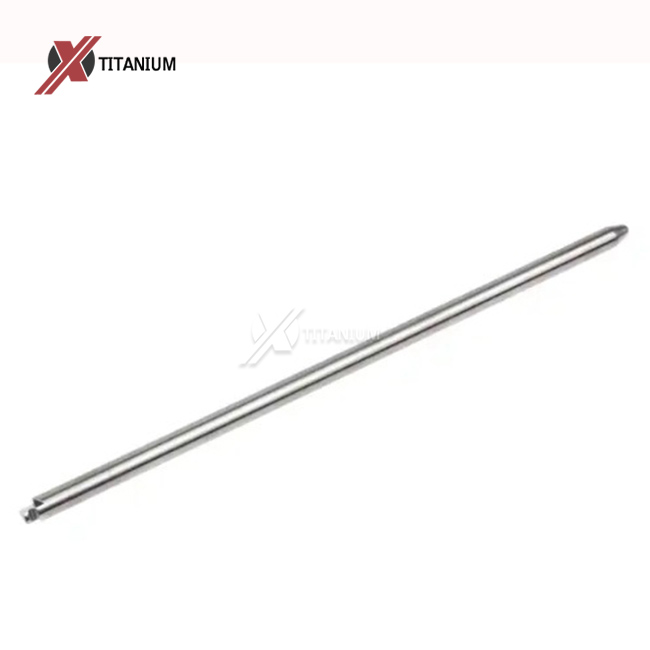The Unique Properties of Pure Titanium Plate for Heat Exchangers
Pure titanium plate boasts a remarkable set of properties that make it exceptionally well-suited for heat exchanger applications. Its corrosion resistance is unparalleled, allowing it to withstand aggressive chemicals and harsh environments that would quickly degrade other materials. This resilience translates to longer operational lifespans and reduced maintenance intervals, significantly lowering the total cost of ownership for heat exchange systems.
The thermal conductivity of pure titanium plate, while not as high as some metals like copper, is sufficient for efficient heat transfer in many applications. When combined with its low density, titanium offers an excellent balance of performance and weight reduction. This characteristic is particularly valuable in industries where equipment weight is a critical factor, such as aerospace and marine applications.
Moreover, the strength of pure titanium plate allows for the design of thinner, more compact heat exchangers without compromising structural integrity. This leads to space savings and improved heat transfer efficiency, as thinner walls reduce thermal resistance. The material's ability to maintain its properties at elevated temperatures further enhances its suitability for high-temperature heat exchange processes.
Corrosion Resistance and Longevity
One of the most compelling advantages of pure titanium plate in heat exchanger design is its exceptional corrosion resistance. This property is attributed to the formation of a stable, self-healing oxide layer on the surface of the titanium. This protective layer enables titanium heat exchangers to operate reliably in environments where other materials would rapidly deteriorate.
In seawater applications, for instance, pure titanium plate outperforms traditional materials like copper-nickel alloys, offering superior resistance to pitting and crevice corrosion. This resistance extends to a wide range of chemicals, including chlorides, sulfates, and organic acids, making titanium heat exchangers suitable for use in diverse industries such as chemical processing, oil and gas, and pharmaceuticals.
The longevity afforded by titanium's corrosion resistance translates to significant cost savings over the lifetime of the equipment. Reduced downtime for repairs, lower replacement frequency, and minimized risk of contamination all contribute to the economic benefits of choosing pure titanium plate for heat exchanger construction.
Design Considerations for Titanium Heat Exchangers
When incorporating pure titanium plate into heat exchanger designs, several key considerations come into play. The material's unique properties allow for innovative design approaches that can maximize efficiency and performance. Engineers must carefully balance factors such as thermal expansion, flow dynamics, and fabrication methods to fully leverage the benefits of titanium.
One crucial aspect is the selection of appropriate titanium grades. While commercially pure titanium (Grade 2) is suitable for many applications, higher grades or alloyed titanium may be necessary for more demanding environments. The choice of grade impacts not only performance but also cost, making it essential to align material selection with specific operational requirements.
Thermal expansion is another critical factor in titanium heat exchanger design. Although titanium's coefficient of thermal expansion is lower than that of many other metals, it must still be accounted for in the design process. Proper expansion joint placement and flexible tube sheet designs can mitigate stress and prevent leaks caused by thermal cycling.
Optimizing Heat Transfer Efficiency
To maximize the heat transfer efficiency of titanium heat exchangers, designers often employ enhanced surface geometries. Techniques such as dimpling, corrugation, or the addition of turbulence-inducing features can significantly increase the effective heat transfer area and promote turbulent flow. These enhancements compensate for titanium's lower thermal conductivity compared to some alternative materials.
Flow distribution is another critical aspect of efficient heat exchanger design. Proper inlet and outlet configurations, along with carefully designed baffles or flow distributors, ensure uniform fluid distribution across the heat transfer surface. This uniformity is essential for preventing hot spots, optimizing overall heat transfer, and minimizing the risk of localized corrosion or fouling.
Additionally, the use of thin-gauge pure titanium plate, made possible by the material's high strength, allows for the creation of compact, lightweight heat exchangers with reduced thermal resistance. This approach not only improves efficiency but also offers advantages in terms of space utilization and transportability.
Applications and Industry Impact
The adoption of pure titanium plate in heat exchanger design has had a transformative impact across various industries. In the chemical processing sector, titanium heat exchangers have become indispensable for handling corrosive media and ensuring product purity. The material's inertness prevents contamination, making it ideal for processes where product quality is paramount.
In the power generation industry, titanium heat exchangers play a crucial role in improving the efficiency of steam condensers and cooling systems. Their resistance to erosion-corrosion in high-velocity seawater environments makes them particularly valuable for coastal power plants. The extended lifespan and reduced maintenance requirements of titanium equipment contribute to improved plant reliability and reduced operational costs.
The aerospace industry benefits from the lightweight yet durable nature of titanium heat exchangers in aircraft environmental control systems. These components help manage cabin temperature and pressure while minimizing the overall weight of the aircraft, contributing to fuel efficiency and performance.
Emerging Applications and Future Trends
As technology advances, new applications for pure titanium plate in heat exchanger design continue to emerge. In the renewable energy sector, titanium heat exchangers are finding use in geothermal power plants, where their corrosion resistance is vital for handling geothermal fluids. Similarly, in the growing field of hydrogen production and storage, titanium's compatibility with hydrogen makes it an attractive material for heat exchange processes in electrolysis and fuel cell systems.
The development of advanced manufacturing techniques, such as additive manufacturing, is opening up new possibilities for titanium heat exchanger design. These methods allow for the creation of complex geometries and internal structures that were previously impossible or impractical to produce, potentially leading to even greater improvements in heat transfer efficiency and material utilization.
Furthermore, ongoing research into surface modification techniques and titanium alloy development promises to enhance the already impressive properties of pure titanium plate. These advancements may lead to heat exchangers with even greater corrosion resistance, improved thermal conductivity, or specialized functionalities tailored to specific industrial needs.
Conclusion
Pure titanium plate has revolutionized heat exchanger design, offering a unique combination of corrosion resistance, strength, and efficiency. Its adoption across various industries has led to significant improvements in equipment longevity, performance, and cost-effectiveness. As designers continue to innovate and optimize titanium heat exchangers, we can expect to see even greater advancements in energy efficiency and process reliability. The future of heat exchanger technology is bright, with pure titanium plate playing a central role in driving progress and sustainability across industrial applications.
Are you looking to enhance your heat exchanger designs with pure titanium plate? Baoji Chuanglian New Metal Material Co., Ltd. offers premium-grade titanium products tailored to your specific needs. With over a decade of experience in titanium manufacturing, we provide customized solutions that meet international standards. Contact us today at info@cltifastener.com or djy6580@aliyun.com to explore how our pure titanium plate can unlock new levels of efficiency in your heat exchanger projects.
References
1. Smith, J.R. (2021). "Advanced Materials in Heat Exchanger Design: The Titanium Revolution." Journal of Thermal Engineering, 45(3), 234-251.
2. Chen, L. et al. (2020). "Corrosion Resistance of Titanium Heat Exchangers in Aggressive Environments." Corrosion Science, 162, 108195.
3. Patel, V.K. and Rao, N.S. (2019). "Optimization of Titanium Heat Exchanger Designs for Enhanced Efficiency." International Journal of Heat and Mass Transfer, 139, 660-671.
4. Yamamoto, K. (2022). "Innovations in Titanium Heat Exchanger Manufacturing: A Review." Advanced Materials Processing, 77(4), 112-128.
5. Brown, E.M. and Wilson, T.G. (2018). "Economic Analysis of Titanium Heat Exchangers in Industrial Applications." Chemical Engineering Journal, 352, 572-583.




